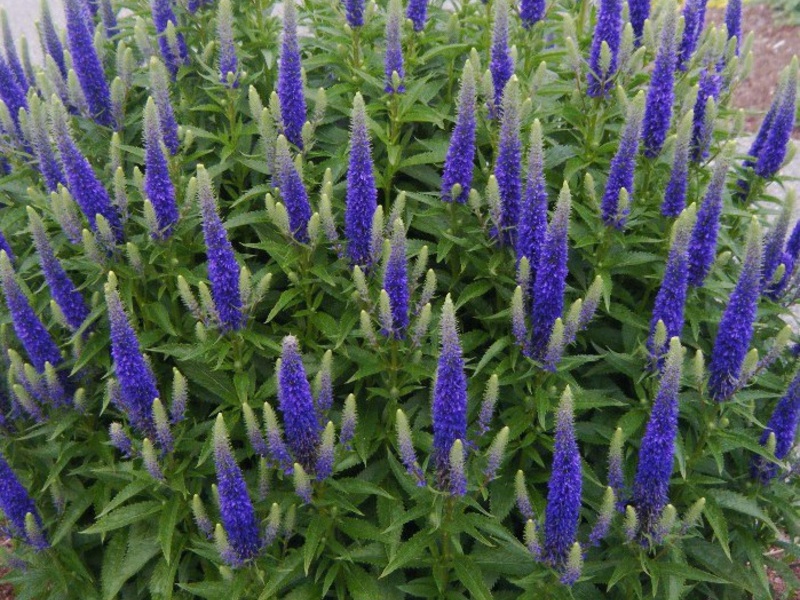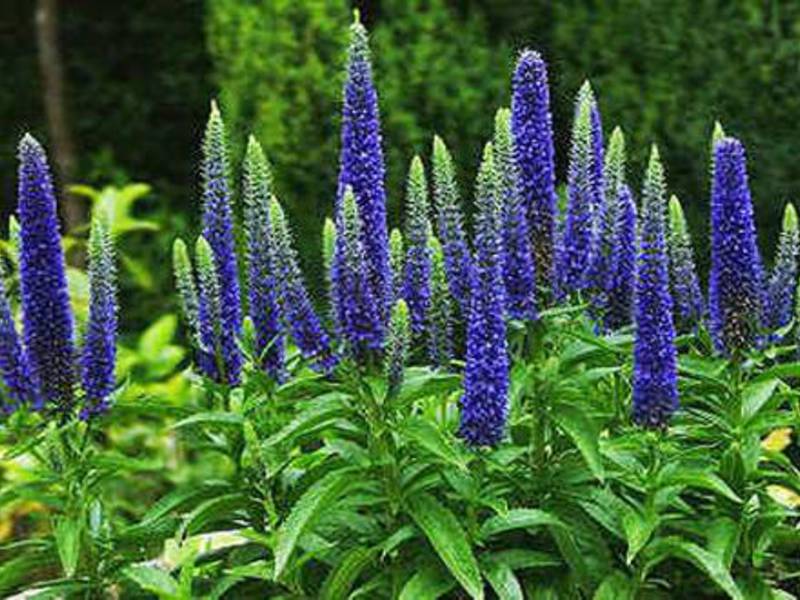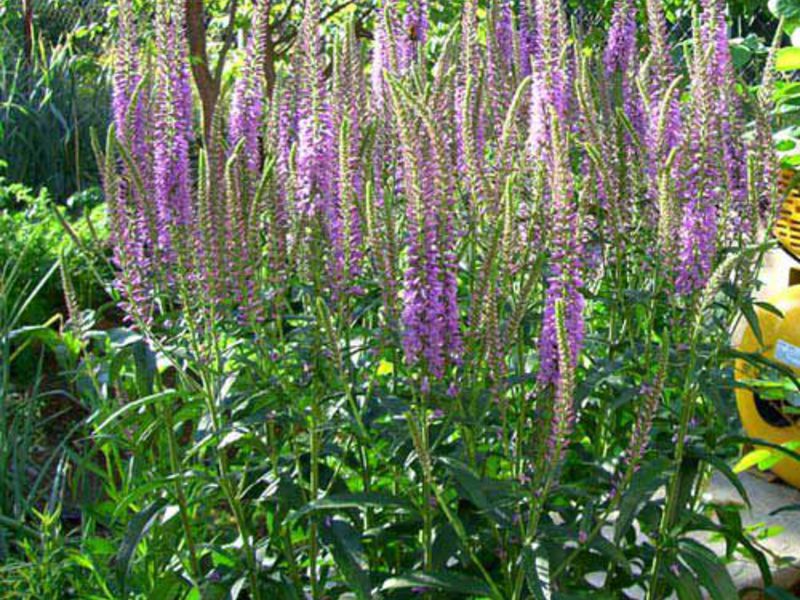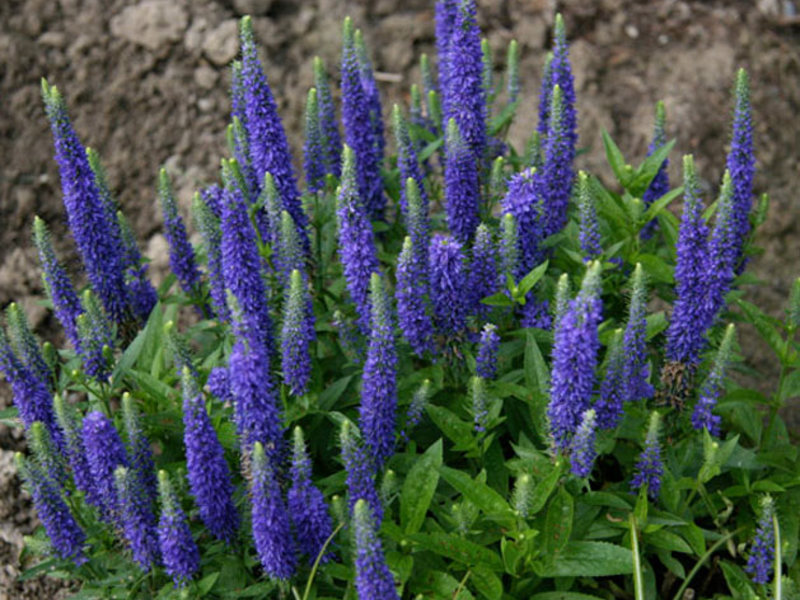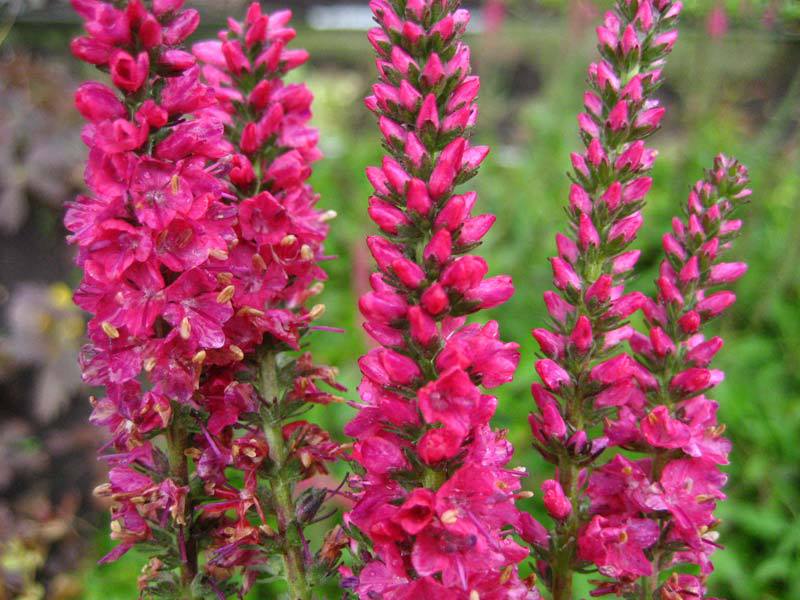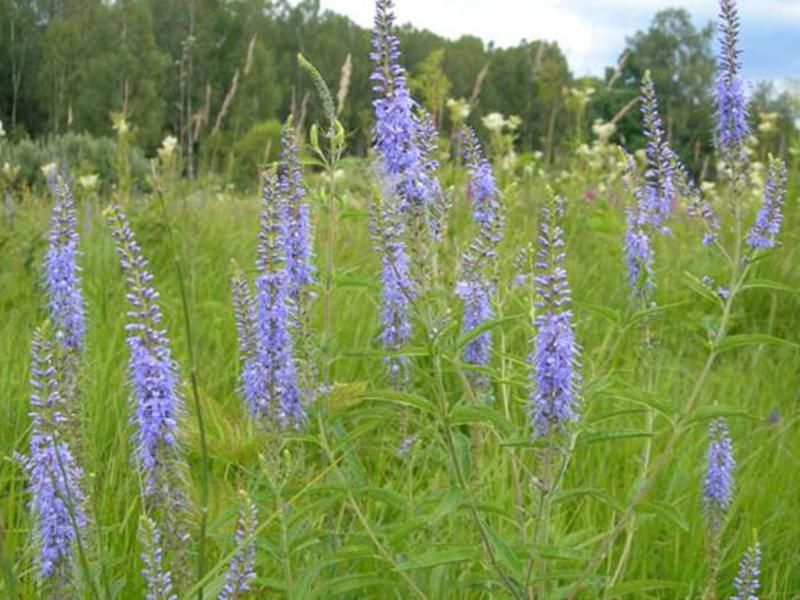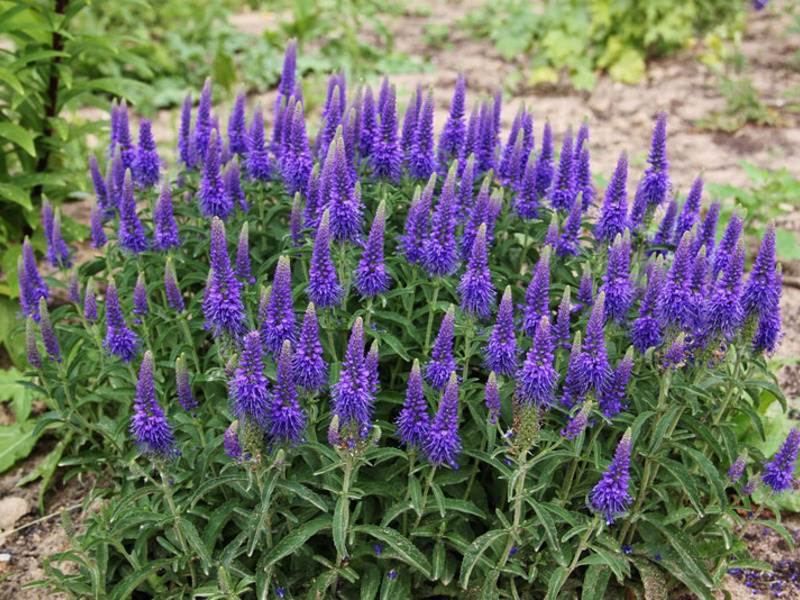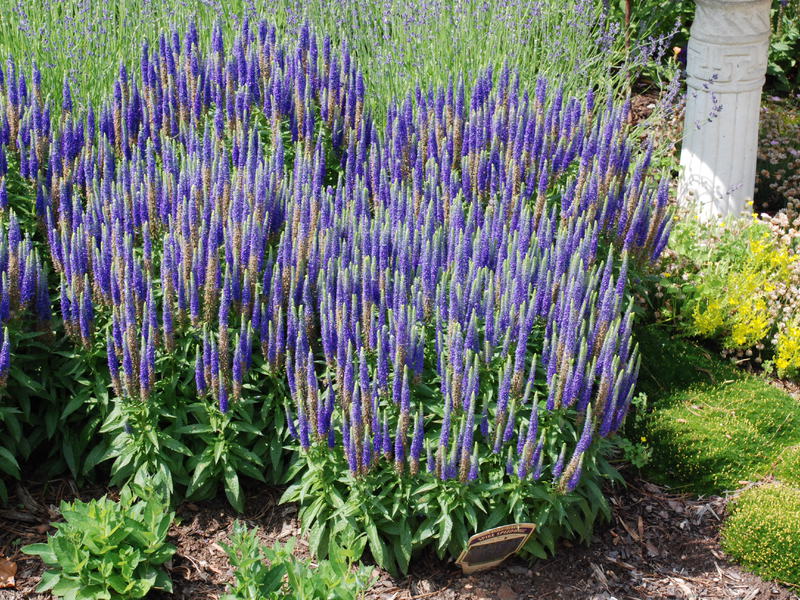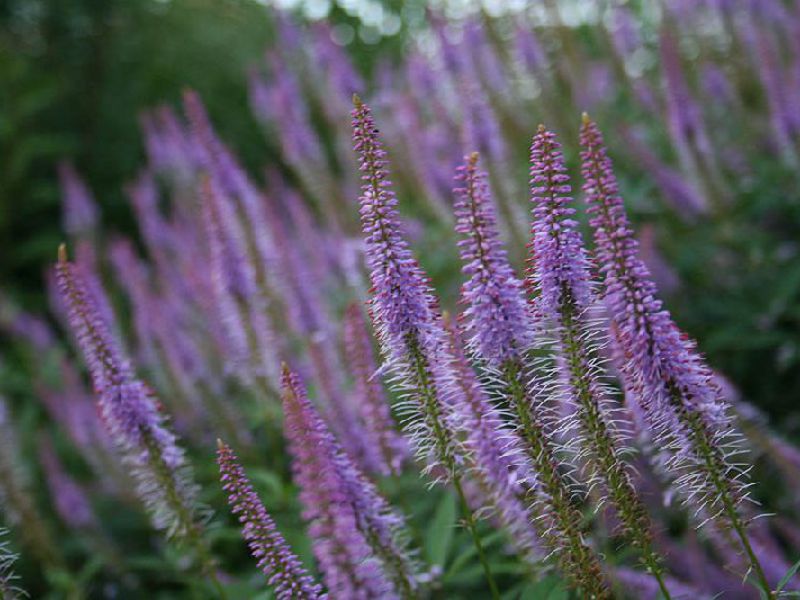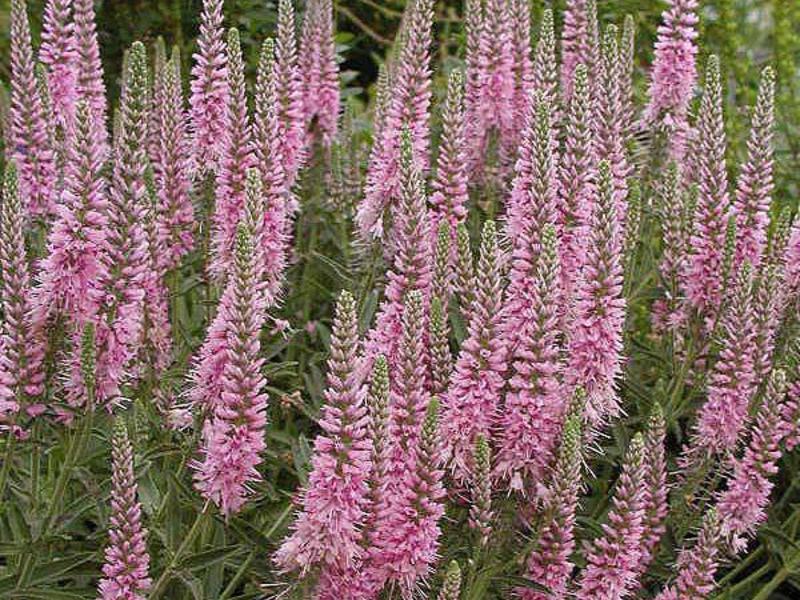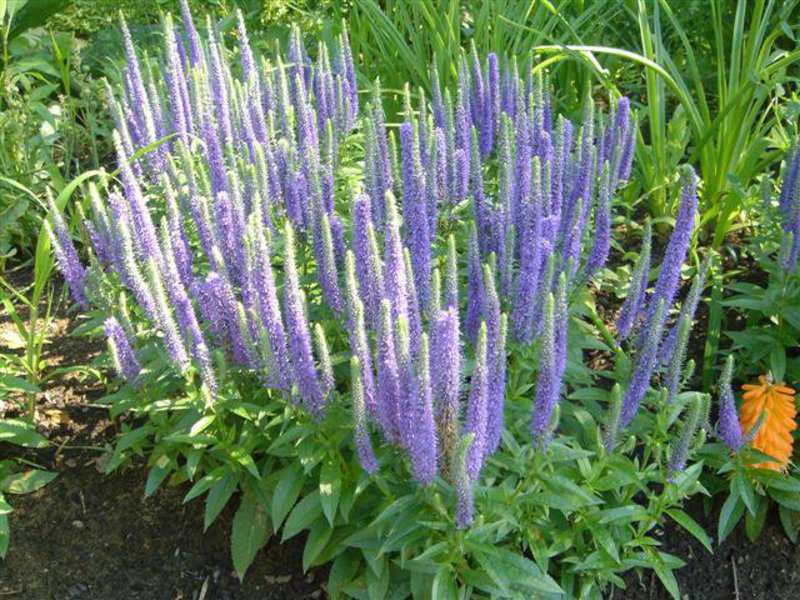Veronica is unlike most of the known ornamental plants. To experienced flower growers, it is known for its medicinal properties, and therefore the use of this plant allows you to abandon medical care and pharmaceutical preparations. However, Veronica is of the greatest interest to fans of gardening and floriculture, because she is often used by them for decorative purposes.
Today there are a large number of different varieties and types of Veronica, which opens up opportunities for its use in landscape design. All that is required of the gardener is choose a suitable variety and correctly place it in a flowerbed in order to get pleasure from the flowering of Veronica every season.
Content
General information about the plant
 Veronica is a very common plant, the varieties of which are represented in different countries of the world. This can be explained by its unpretentiousness and drought resistance, which is why it manages to survive in any climatic conditions. The plant is undemanding to soil, so it feels comfortable as on sandy and clayey, and on loose and swampy ground. At first, it adorned forests, fields and mountains, but after a while they began to use it for decorative purposes for growing in flower beds.
Veronica is a very common plant, the varieties of which are represented in different countries of the world. This can be explained by its unpretentiousness and drought resistance, which is why it manages to survive in any climatic conditions. The plant is undemanding to soil, so it feels comfortable as on sandy and clayey, and on loose and swampy ground. At first, it adorned forests, fields and mountains, but after a while they began to use it for decorative purposes for growing in flower beds.
When Veronica became a cultivated plant, it served as the basis for the development of new varieties adapted for ornamental gardening.
However, the person met Veronica creeping a long time ago, and at that time she was of value to him because of her medicinal properties. There are several hypotheses about the origin of the name Veronica. Perhaps this is due to the Greek word, which translates as "little oak", or Latin, which means "real medicine" or "genuine plant." There is also such a version that it got its name in honor of Saint Veronica.
Types of veronica
The genus of this plant is quite numerous and includes more than 300 types... But at the same time, he has very few representatives that can be used for growing in the garden.
However, the varieties bred for such purposes are very unpretentious in care and cultivation. After all, Veronica not only successfully tolerates any weather whims, but also blooms for quite a long time and can grow in various forms. Moreover, among them there are varieties that are most often used for decorative purposes:
Veronica medicinal
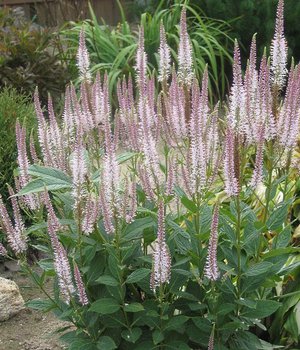 this species can be found in many places. Most of its representatives live in Europe, North America, the Caucasus, Turkey and Siberia;
this species can be found in many places. Most of its representatives live in Europe, North America, the Caucasus, Turkey and Siberia;- its habitual habitat is light sparse forests. At the first meeting, Veronica officinalis can be mistaken for a forget-me-not flower;
- the main feature is that in the process of growth, the stems stretch and intertwine, resulting in a beautiful green rug decorated with blue flowers;
- the plant demonstrates decorative character when grown in flower beds and paths. Veronica officinalis has ovoid leaves, which are slightly harsh and have a short stem;
- the characteristic color of the flowers is pale blue, although in some species the shade may be white;
- this variety blooms for a long time, so it can be enjoyed throughout the summer;
- the main breeding methods are the use of shoots and sowing seeds.
- sowing before winter or spring is a common practice;
- after sowing, a lot of time must pass - 2 years before flowers grow;
- Veronica officinalis can be grown in poor soils and in the shade, and it can successfully tolerate long periods of drought.
Veronica Steller
- in vivo, this variety is most common in China and Japan;
- being a low-growing plant, it can grow up to 25 cm, the top is decorated with inflorescences;
- during the growing season forms straight, upright stems with pubescence. The characteristic shape of the leaves is ovoid with a serrated edge, reaching 3 cm in length;
- has shortened inflorescences resembling spikelets. In the first weeks of flowering, the ear is dense, but subsequently becomes looser;
- during the flowering of this variety, flowers are formed that have a blue or purple tint;
- flowering begins in July and lasts until autumn;
Veronica creeping
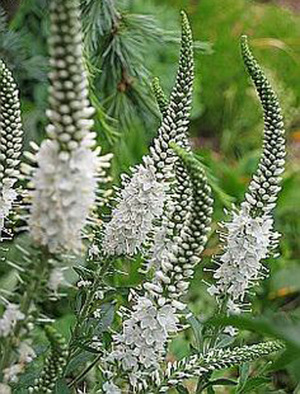 the habitats of this variety are the steppes, meadows and fields of Asia, Siberia and Central Europe;
the habitats of this variety are the steppes, meadows and fields of Asia, Siberia and Central Europe;- creeping shoots form a dense carpet up to 10 cm high, which is decorated with inflorescences of a blue or blue hue;
- leaves are ovoid, grow on short legs;
- What makes the variety unique is that it retains its green color in winter;
- creeping veronica is an ideal option for decorating rocky gardens and decorative flower beds near water bodies;
- sowing of seeds or cuttings are used as the main methods of reproduction;
- after sowing the seeds, the plants begin to bloom only after two years. Favorable conditions for propagation by cuttings arise in May.
Growing Veronica
Even with all the unpretentiousness of this plant, caring for Veronica in winter should include moderate watering, because otherwise, with waterlogging, there is a danger of its death. It is not that difficult to care for this flower, as you can use any soil. Veronica feels most comfortable at a temperature of 14-20 degrees.
There are many varieties that can grow well during dry periods of summer. The highest demand for moisture is in spring, before flowering. At the moment when the first flowers begin to open, watering is reduced. When the last perennial flower of Veronica withers, the aerial part of the plant is pruned. This measure will stimulate the formation of new young leaves. Therefore, this procedure allows you to ensure the aesthetics of the plant throughout the spring-summer period and autumn.
Reproduction methods
To get new plants of Veronica, you can use the following breeding methods:
- division of the rhizome;
- grafting;
- sowing seeds.
As a rule, when growing Veronica, spikelet growers prefer the method that suits them best. Sowing seeds in a permanent place is best in the fall. However, you can do this in the spring, but first you have to carry out the operation of hardening the planting material - stratification. For grafting, the most favorable moment is created in the summer. It is necessary here prepare young tops of the stems... Subsequently, they are placed in rooting soil or water to stimulate the root formation process. At the moment when a well-developed root system is formed in plants, transplantation into open ground can be carried out.
However, most often, new Veronica bushes are obtained by plants by dividing the rhizome. The popularity of this method is due not only to the minimal investment of time, but also to the highest survival rate in a new place.It is recommended to do this in the spring or early fall. First you need to remove the ground stems, after which the perennial plant is dug up. For the operation of dividing the rhizome, you can use a knife or shovel. It is important to divide the plants into even parts so that the first cut off root contains at least 3 shoots. Upon completion of the division, it is important to immediately transplant to a new place.
Useful properties and uses of Veronica
 Many centuries ago, man learned about the medicinal properties of Veronica creeping. Therefore, even in ancient times it was used for the treatment of various diseases... The plant has not lost this quality in the modern world, where it continues to be actively used in folk medicine.
Many centuries ago, man learned about the medicinal properties of Veronica creeping. Therefore, even in ancient times it was used for the treatment of various diseases... The plant has not lost this quality in the modern world, where it continues to be actively used in folk medicine.
It should be remembered that the tops of plants with leaves and flowers are valuable for the treatment of diseases.
They are harvested at the beginning of summer - at the very peak of flowering. It is very important to minimize the drying time, therefore this operation is carried out at high temperatures - 40 degrees... This minimizes flower loss and maintains the natural color of the plant. After properly drying, the plants retain their medicinal properties for 2 years. After this period, they become useless.
Conclusion
Although, perhaps, many novice flower growers are unfamiliar with the Veronica plant, it is a fairly popular plant, and not only among flower lovers. The fact is that a person met her many centuries ago, when he learned about medicinal properties. Therefore, it was originally used in medicine to treat many ailments.
In modern conditions, creeping veronica has found another use - to decorate various elements of landscape design... Therefore, Veronica spikelet is so often found in the garden. Due to the high unpretentiousness of Veronica, it can be grown in almost any area. The easiest way to do this is by propagating it by cuttings, which guarantee high survival rate.

